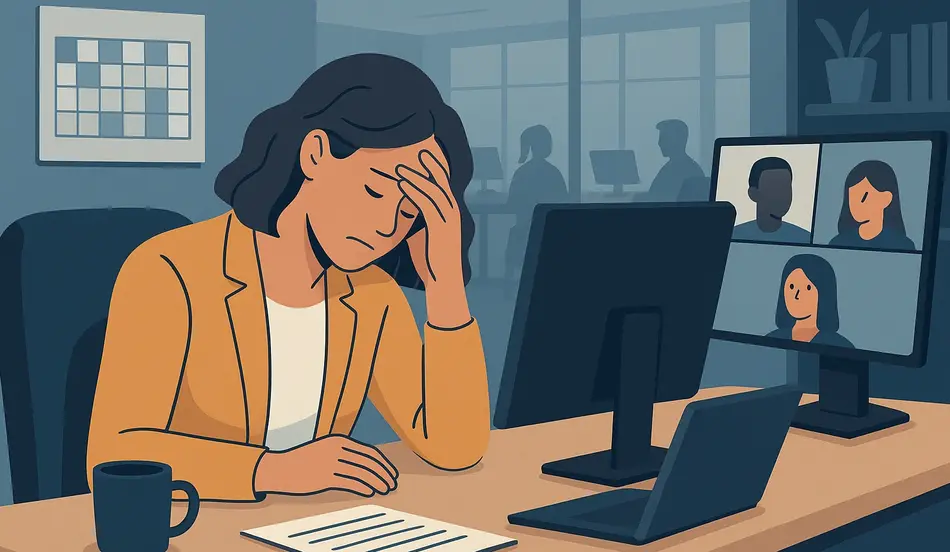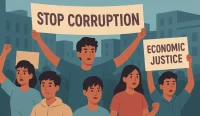As companies solidify their hybrid‑work models, human‑resources executives once champions of workplace flexibility are reporting record levels of stress and exhaustion. Tasked with juggling competing demands from leadership, managers, and employees spread across home and office, HR teams find themselves in a near‑constant state of crisis management. Here’s how burnout has taken hold and what organizations can do to support their people leaders.
Table of Contents
1. The Scope of the Burnout Crisis
Over the past two years, surveys show that more than 60 percent of HR directors and managers say their workload has increased “substantially” compared to pre‑pandemic levels. Of those, nearly half report feeling “chronically overwhelmed,” with symptoms ranging from insomnia and headaches to a creeping sense of cynicism about their roles. Many have taken on extra duties overseeing new hybrid‑work policies, DE&I initiatives, mental‑health programs and return‑to‑office mandates without a corresponding increase in headcount or budget.
2. What’s Driving the Pressure?
- Policy Complexity: Crafting fair hybrid‑work guidelines that balance team cohesion, client needs and legal compliance falls squarely on HR’s plate. Continuous tweaks around in‑office days, remote‑work allowances and safety protocols mean policy documents never truly stabilize.
- Employee Well‑Being: HR now owns mental‑health support, harassment response, career coaching and wellness subsidies. Delivering these services at scale often via virtual platforms can feel like firefighting rather than program building.
- Talent Wars: With skills shortages and high turnover, HR leaders spend disproportionate time on recruiting, candidate experience and counter‑offer strategies. Each resignation triggers a scramble for backfill, handover and knowledge transfer.
- Digital Transformation: Rolling out new HR technologies—self‑service portals, AI‑powered analytics, employee‑engagement apps—requires training, data cleanup, change‑management and ongoing vendor oversight.
3. The Personal Toll
Burned‑out HR professionals describe sleepless nights fielding late‑evening employee emails, weekends consumed by strategy decks for the executive team and guilt over delayed responses to employee concerns. One senior HR business partner likened her calendar to “a game of whack‑a‑mole,” where every resolved issue is immediately replaced by another. Many report diminishing job satisfaction and are weighing moves into consulting or roles outside of people operations.
4. Coping Strategies for HR Teams
- Strategic Delegation: Shift transactional tasks (benefits enrollment, policy FAQs) to shared‑services centers or external partners, freeing senior HR staff to focus on high‑impact areas.
- Protected “No‑Meeting” Blocks: Carve out two half‑days per week where HR team members cannot be booked for calls, allowing uninterrupted time for deep work and planning.
- Peer Support Circles: Establish small groups of HR peers—across functions or geographies—that meet weekly to share challenges, swap resources and provide mutual encouragement.
- Rotational Relief: Introduce a rotating “HR on‑call” schedule so no single person bears the brunt of after‑hours inquiries for more than one week at a time.
Is HR Burnout Affecting Your Career?
If you’re feeling overwhelmed by hybrid chaos or post-COVID pressure, it might be time for a change. Explore new HR roles or leadership paths now.
Browse HR Jobs Now →5. Organizational Best Practices
Leadership can help mitigate HR burnout by:
- Right‑Sizing the Team: Conduct a workload analysis to identify chronic capacity gaps and justify headcount increases or external hires.
- Empowering Self‑Service: Invest in intuitive HR platforms that let employees handle routine tasks—time off requests, org charts, policy look‑ups—without HR intervention.
- Clear Escalation Paths: Define which issues truly require senior‑team involvement versus those that HR business partners can resolve independently.
- Visible Executive Sponsorship: Have C‑suite leaders publicly recognize HR contributions, participate in wellness initiatives and model healthy work‑life boundaries.
6. Technology’s Role
While new HR tech can add initial workload, long‑term automation pays dividends:
- Chatbots for FAQs: AI‑driven assistants field routine policy questions around the clock.
- Analytics Dashboards: Prebuilt reports on turnover, engagement and hiring velocity eliminate manual data pulls.
- Virtual Learning Hubs: On‑demand training libraries reduce the need for live‑instructor sessions.
The key is deliberate, phased adoption with sufficient change‑management support to prevent tech‑driven chaos.
7. The Road to Renewal
HR leaders themselves benefit from professional development:
- Resilience Training: Workshops on stress management, mindfulness and adaptive leadership.
- Executive Coaching: One‑on‑one support to clarify priorities, strengthen delegation skills and navigate stakeholder demands.
- Cross‑Functional Rotations: Short stints in finance, marketing or operations to break monotony and build broader business acumen.
Encouraging HR teams to step outside their day‑to‑day roles can reignite passion and foster a renewed sense of purpose.
Frequently Asked Questions (FAQ)
Why are HR roles so prone to burnout in a hybrid world?
The hybrid model multiplies policy permutations, requires scaling well‑being programs remotely, and drives nonstop hiring challenges—all amplifying HR workload without clear boundaries.
How many HR professionals report burnout?
Recent industry surveys indicate that over 50 percent of HR leaders feel “chronically overwhelmed,” with a sizable minority considering early exit from their roles.
Can outsourcing HR tasks help?
Yes—partnering with shared‑services centers or specialized vendors for payroll, benefits and basic inquiries can sharply reduce transactional burden on in‑house teams.
What’s a simple first step to relieve HR stress?
Implement “no‑meeting” blocks each week to give teams protected time for strategic planning and recovery, rather than continuous reactive work.
Bottom Line:
As the architects of hybrid‑work frameworks and guardians of employee well‑being, HR professionals face unprecedented demands and mounting burnout. Organizations that step up with targeted delegation, technology investments, team‑support mechanisms and visible executive backing will not only sustain their people teams but also ensure a healthier, more resilient workplace for all.




